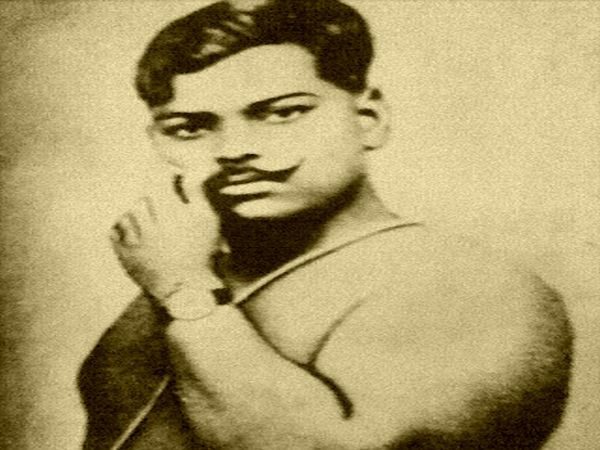
The revolutionary the British feared: Chandrashekhar Azad
At 15, Chandrashekhar Tiwari joined the non-cooperation movement launched by Mahatma Gandhi in December 1921. He was arrested then for taking part in the movement and produced before a magistrate.
Bengaluru, Feb 27: On the 86th death anniversary of Chandrashekhar Azad, the nation is paying tribute to the legendary revolutionary who shot himself dead, as he did not want to be captured alive by the British.
Birth and childhood:
Azad was born on July 23, 1906 in Bhabara village of present day Madhya Pradesh. His forefathers had their roots in Badarka village near Kanpur. He was sent to study at Kashi Vidyapeeth in Banaras, by his father Sitaram Tiwari as his mother Jagrani Devi wanted him to be a great Sanskrit scholar.

Azad the 15-year-old freedom fighter:
He joined the non-cooperation movement launched by Mahatma Gandhi in December 1921 when he was 15. He was arrested then for taking part in the movement and produced before a magistrate where he had famously given his name as Azad (free), he had told the magistrate that his father's name was Swatantrata (which means independence) and he had said his residence was jail. From that people started calling him Chandrashekhar Azad.
Revolutionary methods:
When Gandhi suspended the non-cooperation movement in 1922, Azad met other young revolutionary leaders who later introduced him to Ram Prasad Bismil, who had formed Hindustan Republican Association in 1924 along with other revolutionaries.
To show his loyalty, to the nation and the association, Azad had burnt his hand over a lamp. As an active member of HRA he used to collect funds which mostly came by robbing government properties. Azad became a famous revolutionary when he robbed the train at Kakori, in Lucknow in 1925. After the robbery, the British captured many revolutionaries and sentenced them to death. Azad however managed to escape and later reorganised HRA with the help of other revolutionaries.
He was also part of team that attempted to blow up the viceroy's train in 1926 and he had shot at J P Saunders in Lahore in 1928 to avenge the killing of Lala Lajpat Rai. Such was his fame that despite being Congressmen, Motilal Nehru used to fund Azad regularly.
He was closely associated with Bhagwati Charan Vohra who along with Bhagat Singh, Sukhdev and Rajguru helped to further transform HRA into Hindustan Socialist Republican Association in 1928 with an aim to make India independent socialist nation.
Home-base Jhansi:
Azad settled down near Jhansi and started living as Pandit Harishankar Brahmachari in a hut build near a Hanuman temple on the banks of Satar River. He used to teach children from a nearby village and thereby established great rapport with the locals. He used to use Orchha forest near Jhansi for shooting practice and to train other members of the group, as he was an expert shooter.
Azad also learned to drive in Jhansi, and made loyal group members in Sadashivrao Malkapurkar, Vishwanath Vaishampayan and Bhagwan Das Mahaur. Congress leaders Raghunath Vinayak Dhulekar and Sitaram Bhaskar Bhagwat also became his supporters and Bhagwat allowed them to stay at his place for some time.
Death:
Azad was surrounded by police when he was at the Alfred Park in Allahabad on February 27, 1931. Jawaharlal Nehru had informed police about him being in the park.
Azad was wounded in police firing and while he was successful in ensuring that Sukhdev could escape, he was not able to do so himself despite killing three policemen and wounding few. Azad had taken a pledge that he will never be captured alive, and so he shot himself dead with his last bullet.
Tribute to Chandrasekhar Azad:
Post-Independence, the park where Azad died was renamed as Chandrashekhar Azad Park. His Colt pistol is presently displayed at the Allahabad Museum. A monument for him was built in his ancestral village of Badarka and several schools, colleges, roads and other public institutions across India were also named after him.
OneIndia News


 Click it and Unblock the Notifications
Click it and Unblock the Notifications

































